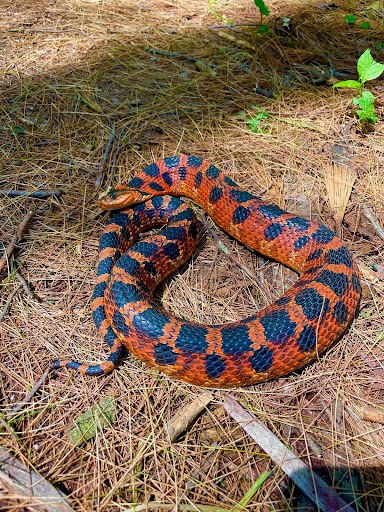A recent sighting of an Eastern Hog-nosed snake on the sands of Ocean City has captured public attention, prompting wildlife officials to educate residents and visitors about this native and non-venomous species.
According to the Maryland Department of Natural Resources Wildlife and Heritage Service, the Eastern Hog-nosed snake is common throughout the state and particularly prevalent on the Eastern Shore. The snake’s name comes from its distinctive upturned snout, which it uses to dig in sandy soils—making its unexpected beach appearance well within its habitat range.
The snake seen in Ocean City was all black, a color variation that occurs among some individuals of the species. Others may appear in a range of spotted patterns with colors including yellow, brown, gray, olive, orange, or red.
A master of defense with no real danger to humans
Though intimidating in appearance when startled, the Eastern Hog-nosed snake is harmless to humans. When threatened, it inflates its body, hisses loudly, and flattens its neck in a manner similar to a cobra. These dramatic displays can include closed-mouth strikes that do not break skin. If the performance fails to deter predators, the snake may resort to playing dead—releasing a foul-smelling musk, opening its mouth, and going limp on its back.
Officials stress that there is no need for alarm when encountering this species. “Like any other wild animal, these snakes are best left alone so that they can go on their way,” the agency said in a public statement. “Just taking photos and leaving it alone will be perfectly fine.”
The Eastern Hog-nosed snake is part of Maryland’s native wildlife and plays a role in local ecosystems by helping control populations of amphibians and small mammals.
